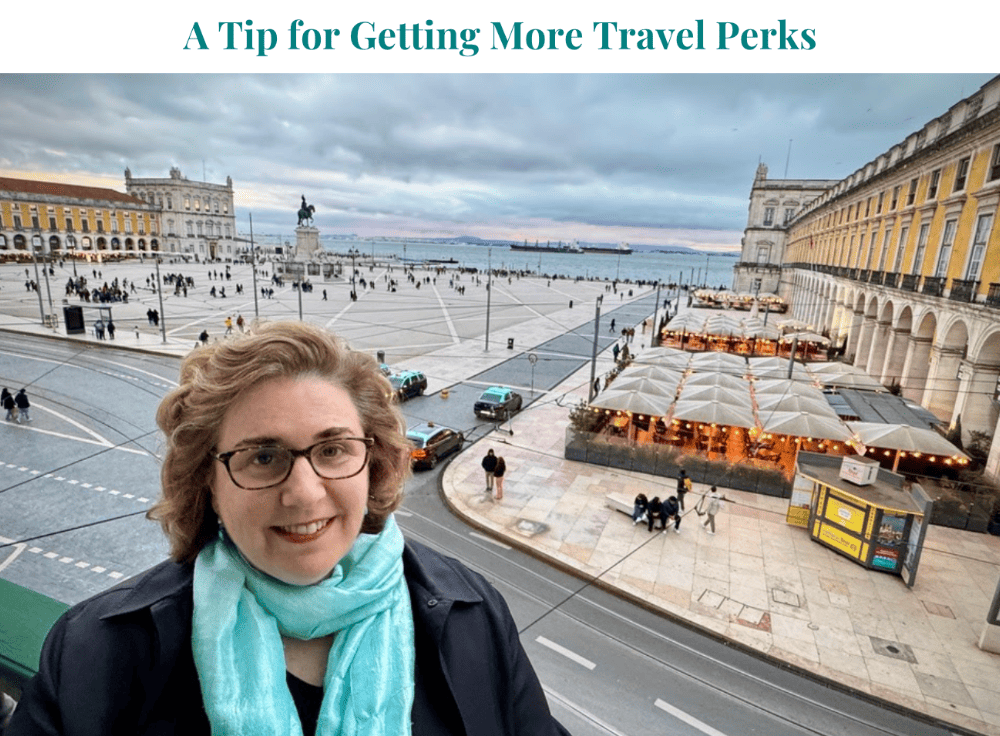Great Barrier Reef, Australia: Insider’s Guide
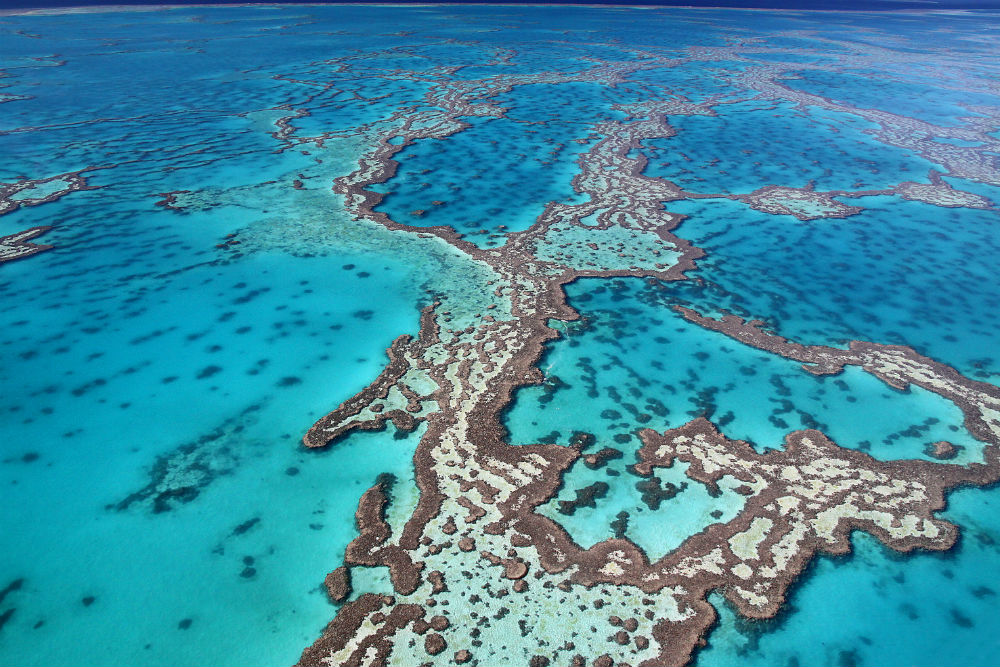 Great Barrier Reef, Australia. Photo: Shutterstock
Great Barrier Reef, Australia. Photo: Shutterstock
The insider advice on this page is from one of Wendy’s Trusted Travel Experts for Australia: Stuart Rigg of Southern Crossings.
Stuart, a native Brit based in Sydney, plans tailor-made travel to Australia, covering the length and breadth of the continent. He has personally tested nearly every property, heli-tour, yacht charter, and waterfront restaurant that he recommends. Stuart has the pull to arrange access to private homes, golf courses, and art collections, but his itineraries aren’t just for high flyers. He can work with a range of budgets, offering careful guidance on everything from self-drive itineraries through the Margaret River wine region to sailing trips around the Whitsundays. As for the Great Barrier Reef, Stuart has failsafe strategies for steering clear of the masses, and he knows exactly which island properties are best for hyperactive families, spa-loving hedonists, or Robinson Crusoe fantasists. If you’d like to combine Australia with New Zealand, his Auckland team will take good care of you. He does not arrange airline travel to Australia, so if you’re looking for a complete package including airfare, write to Ask Wendy.
Where to Stay and Eat
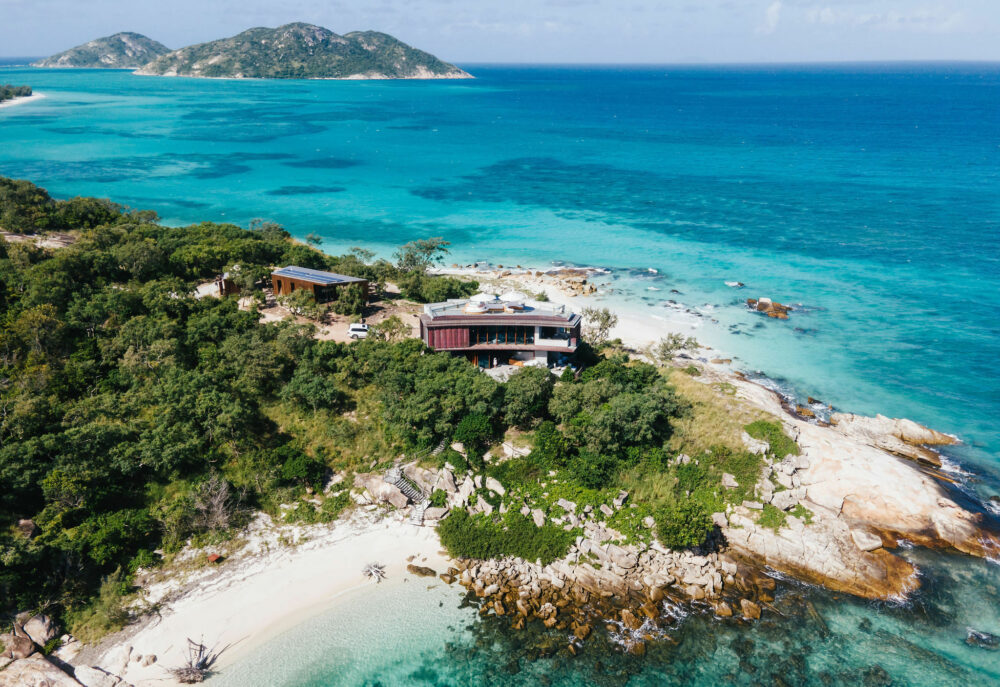
The House at Lizard Island, Great Barrier Reef. Photo: Elise Hassey
Resort worth the splurge
Lizard Island is one of Australia’s most celebrated lodge-style resorts; your arrival here comes via a very scenic one-hour flight from Cairns over the turquoise waters and reefs. Since the resort is located directly on the Great Barrier Reef, guests can snorkel amongst pristine corals right off the beach (of course, diving and fishing trips to secluded cays and atolls farther afield can also be arranged using the resort’s launch). There are 40 beautifully appointed suites and villas, many with direct beach access or their own plunge pools; splurge on a Beachfront Suite and you’ll be mere steps from the reef. There is a well-equipped gym, floodlit tennis court, freshwater swimming pool, an indulgent day spa, and a range of water-sports gear (including stand-up paddle boards, motorized dinghies, glass-bottom sea kayaks, and snorkeling equipment). In addition, guests can tour the Lizard Island Research Station, which is owned and operated by the Australian Museum and offers fascinating insights into the reef’s ecology.
For those seeking an ultra-luxe splurge, the House at Lizard Island is a private villa that combines all the resorts’ amenities with the ultimate in privacy and luxury.
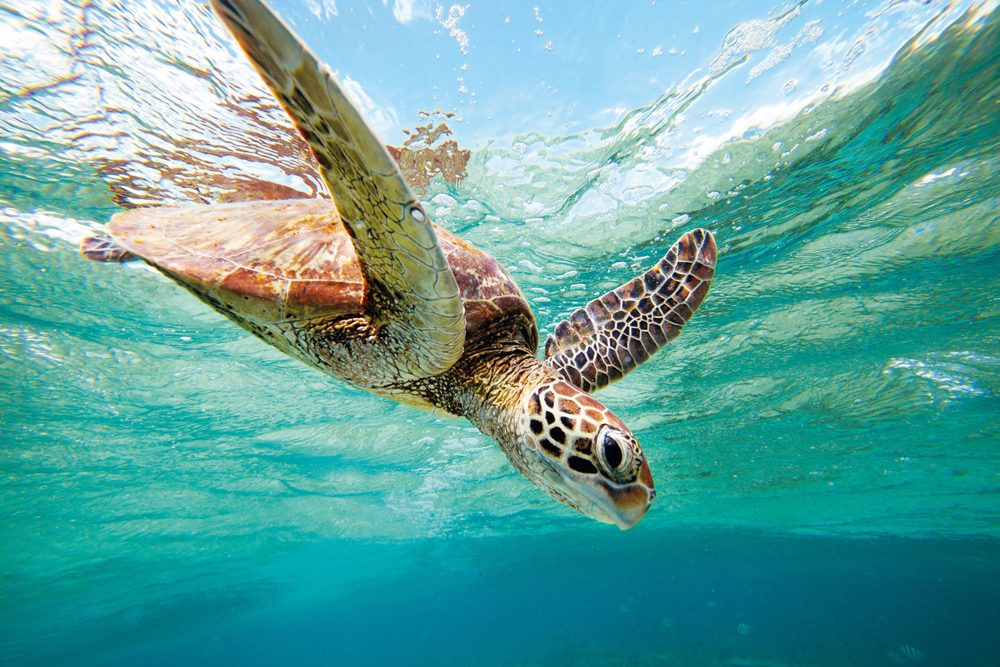
Snorkel with sea life in Queensland. Photo: Tourism and Events Queensland
Best bang-for-your-buck experience
A Coral Expeditions cruise of the northern reefs offers superb value for money. This all-inclusive, seven-night cruise explores some of the most the remote and untouched parts of the region—including Fitzroy Island, Cooktown, Lizard Island, and the magnificent Ribbon Reefs—away from the crowds of countless day-trippers. Throughout the cruise you can snorkel with spectacular tropical fish and over colorful coral gardens, stroll golden beaches, and explore lush rainforest trails.
If you haven’t got seven nights to spare, the Reefsleep experience in the Whitsundays offers excellent value. A maximum of 24 travelers can join this two-day outing, which starts with a cruise from Airlie Beach or Hamilton Island to a permanently moored pontoon and includes all meals with beverages, snorkeling equipment, semi-submersible glass bottom boat touring, access to an underwater observatory, and a night under the stars in a comfortable “Reefbed.”
Best resort for romance
For true castaway romance, escape to Wilson Island—which is both part of, and surrounded by, the Great Barrier Reef. This adults-only hideaway accommodates just 18 guests in nine permanent (and beautifully secluded) safari tents. These tents have king-size beds and captivating ocean views, but no phones, and no televisions—they were designed so you can disconnect to reconnect. Snorkel the stunning reefs straight off the beach, stroll the island’s golden sands hand-in-hand, kayak or paddle-board over the turquoise waters, sip sunset cocktails on your private deck, and enjoy chef-prepared meals in the communal dining room or romantic private picnics.
When you want to be alone
Stuart has access to several beautifully appointed, fully crewed sailing vessels and luxury super-yachts for private charter cruising on the reef. Whether you have a day, a week, or even longer, he can arrange a charter that has you discovering secluded coral cays, snorkeling untouched reefs, and even participating in local conservation initiatives.
Restaurants the locals love
Head to Barbados, on the boardwalk at the Port Douglas Marina, for sundowner cocktails, a local craft beer, or a glass of Australian wine and a casual bite to eat—think salads, pizzas, and shared plates—overlooking Dickson’s Inlet.
Just a short stroll from here, Salsa Bar and Grill is a true local favorite. The light and airy, Queenslander-style restaurant serves local produce with global flair, and an extensive list of cocktails.
Coca Chu is nestled in tranquil tropical gardens overlooking Catseye Beach on Hamilton Island. The restaurant exudes a relaxed holiday atmosphere, and the menu of shared plates showcases fresh local produce and Southeast Asian flavors.
Dish to try
Don’t miss out on local coral trout, a sought-after reef fish with fine white flakes and a very delicate flavor. It can be served baked, steamed, poached, or grilled, but one of the best preparations is the signature whole trout served in the tropical surrounds of the Nautilus restaurant, in Port Douglas.
What to See and Do

The reef seen from above. Photo: Tourism Whitsundays
Don’t miss
To really appreciate the scale and spectacular natural beauty of the Great Barrier Reef, you have to see it from above. This is the world’s largest coral reef system, and it covers an area bigger than the entire state of New Mexico. There are a wide range of helicopter, fixed-wing, and seaplane scenic flights available from Port Douglas, Cairns, Airlie Beach, Hamilton Island, and even Brisbane.
Don’t bother
Cairns is widely considered the gateway to the Great Barrier Reef. This tropical north Queensland town is a commercial hub and is particularly popular with backpackers due to the range of inexpensive accommodations, eateries, bars, and clubs. Cairns has a constructed lagoon but no beach; head a little farther north to Palm Cove or Port Douglas to enjoy palm-fringed beaches, some of the region’s best restaurants, and a more relaxed atmosphere.
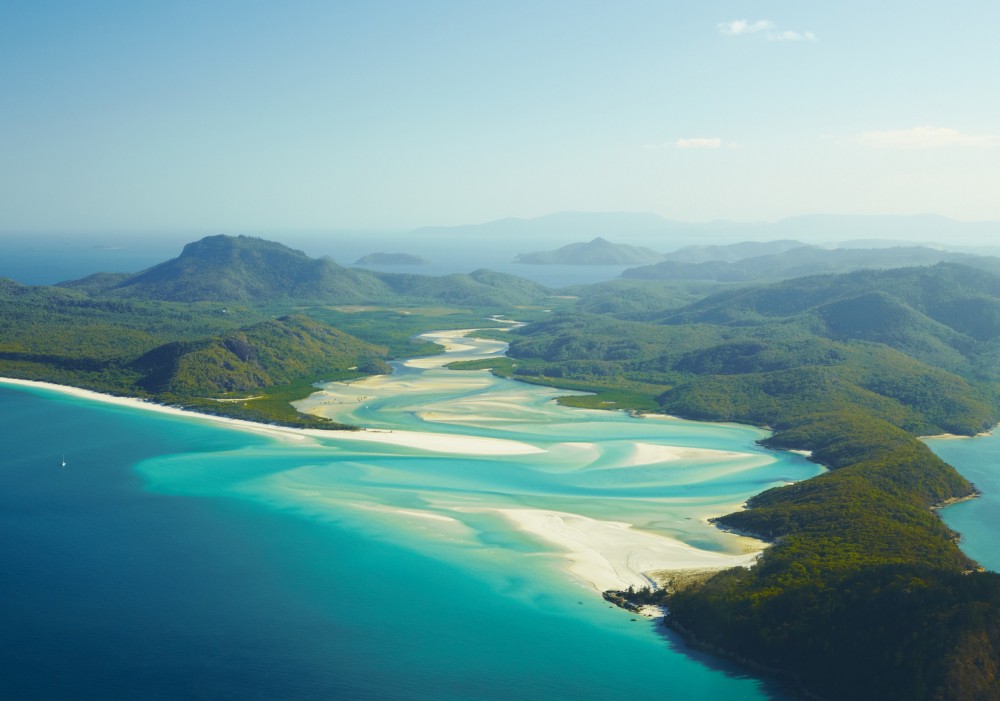
Whitehaven Beach, Whitsunday Island, Queensland. Photo courtesy Tourism Australia.
Best beach
Whitehaven Beach, on the uninhabited Whitsunday Island. There are many superlatives that can describe this nearly four-mile stretch of pure white silica sand. The forested foreshore is beautiful, and the beach offers excellent, child-friendly swimming. Consistently voted one of the most beautiful beaches in the world, Whitehaven attracts great numbers of visitors—so to enjoy it at its unspoiled best, charter a yacht and stay the night, or fly in before the day-trippers arrive.
Cheap thrill
Between November and late March on the Queensland coastline, the Mon Repos Conservation Park supports the most significant turtle nesting population in the South Pacific, critical to the species’ survival. Join park rangers on a nightly Turtle Encounter for your chance to see female turtles laying their eggs (November to January) or watch young hatchlings dig free and hustle down the beach (January to March)—all for less than $20 (which also includes entry to the Mon Repos Turtle Centre).
Best Time to Go
May through October sees warm, sunny days with clear visibility for divers and snorkelers. Although the winds can get up from May through July—reducing underwater visibility on or near the shore and making a trip out to the reef somewhat rougher—these are also some of the best months for whale watching: swimming and snorkeling with dwarf minke whales on the northern Ribbon Reefs or cruising with humpbacks on their annual migration.
Worst Time to Go
December through April is the “green” season, characterized by hot, humid days and higher rainfall. Tropical storms may occur during these months, which also coincide with jellyfish season. Stingers are largely coastal and therefore not generally found on the reef, but they sometimes congregate around islands close to the mainland. Most popular mainland beaches north of Gladstone have stinger-resistant enclosures for swimmers. Reef operators normally supply wet suits to reduce the risk of stings.
That said, this time of year is when you can witness coral spawning and see turtle hatchlings; if you go, head to Heron or Lady Elliot islands at the southern end of the Great Barrier Reef, which enjoy more comfortable summer temperatures.
Bragging Rights
Take a scenic helicopter flight to a remote coral cay, where you can enjoy a private picnic surrounded by nothing but miles upon miles of turquoise waters and millions of brightly colored fish.
Biggest Rookie Mistake
Assuming that the Great Barrier Reef is a single destination. In fact, it is the largest living structure on the planet, stretching for over 1,200 miles and made up of more than 2,900 individual reefs and 900 islands. Accordingly, it’s vital to think carefully about the type of reef experience you seek; this could involve a stay on a reef island, a mainland-based experience with day visits to the reef by sea or air, a multi-day cruise, a yacht charter, or maybe a live-aboard dive vessel.
The Souvenir
Bring home a souvenir that also supports the protection of one of the world’s greatest natural treasures: a Great Barrier Reef Legacy beach towel. GBRL is a not-for-profit social enterprise that leads collaborative coral research, expeditions, education, and stewardship.
Please don’t gather coral or shells, or bring home souvenirs made from the building blocks of this UNESCO World Heritage site.
Tipping Tips
Employees in Australia do not depend on gratuities for their income, nor are service charges routinely added; however, a tip of up to 10 percent in recognition of excellent service has become common in the better restaurants. Tip tour guides or concierges only when service has been exceptional. Taxi drivers and hotel porters appreciate a small tip, but no more than that.
Don’t Forget to Pack
Water shoes for beach and reef walks: Corals can be sharp, and cuts can get infected quickly and severely.
It’s important that divers bring their dive certification card (and ideally, log books), as it’s not always possible for dive operators to check certification online.
While sunscreen is a must in Australia, it can be harmful to the reef itself—wearing a wetsuit or a lycra suit while snorkeling is the better option.






